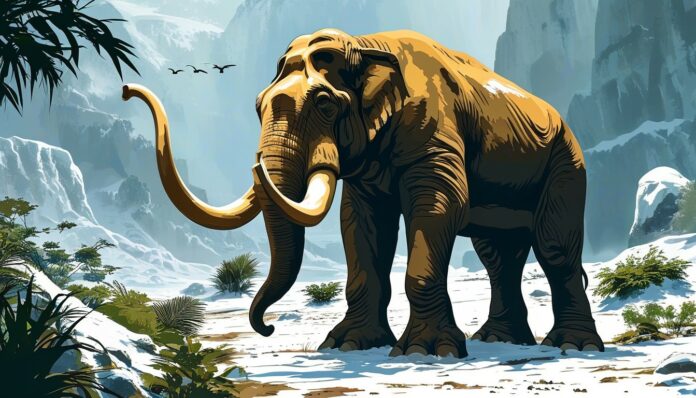Evolution is an endless process, and there are far more extinct animal species than those currently existing. While humans have contributed to the extinction of some species, it would be incorrect to blame humanity for all extinctions, as many species disappeared long before humans could have played a role. The disappearance of various creatures continues to this day, and the lists of extinct animals grow almost every year.
Facts About Extinct Animals:
- Some extinct animals actively hunted early humans. For example, in North America, there were Phorusrhacids, massive predatory birds standing up to 3 meters tall. They couldn’t fly but were excellent runners and considered our ancestors as prey. However, early humans managed to wipe them out using spears, stone axes, clubs, and traps.
- The extinction of certain animals led to the extinction of others. For instance, mammoths, which disappeared relatively recently (about 10,000 years ago), were the primary prey for Smilodons, or saber-toothed tigers. When mammoths went extinct, so did the Smilodons.
- Once upon a time, the oceans of our planet were home to gigantic sharks called Megalodons, which could grow up to 30 meters in length—about the height of a 10-story building.
- Many of the species that coexist with us today appeared on Earth millions of years ago. For example, jellyfish first appeared around 600 million years ago, making them much older than dinosaurs, and they still exist today.
- About 40,000 years ago, giant lizards called Megalania, which were essentially giant monitor lizards weighing up to 2 tons and reaching lengths of 8-9 meters, went extinct. Modern Komodo dragons closely resemble them but are much smaller. Most likely, they are direct descendants of Megalania, which shrank due to island dwarfism. Mammoths that lived on islands were also much smaller than their mainland counterparts.
- Many extinct animals have relatives that are still alive today. Mammoths and woolly rhinos are extinct, but elephants and regular rhinos continue to thrive.
- Today, there are about 160 species of monkeys on Earth. However, there are many more extinct members of this order—around 6,000 species.
- In China, there were river dolphins known as Baiji until quite recently. However, due to ongoing water pollution, they became extinct in 2006 and disappeared forever.
- In New Zealand, giant Moa birds lived relatively recently. After the arrival of the first Maori settlers, these birds were completely exterminated and disappeared about 3-5 centuries ago.
- In South America, on the territory of modern Argentina, there once lived now-extinct birds called Argentavis. They were likely the largest flying creatures on Earth, with wingspans of up to 6-8 meters and weights reaching 60-70 kg.
- The extinct snake Titanoboa, related to modern boas, weighed up to 1 ton and could reach lengths of up to 15 meters.
- Most extinct animals with living descendants were much larger. For example, Deinosuchus, giant crocodiles that went extinct around 70 million years ago, often grew to lengths of 15 meters.
- About 8,000-9,000 years ago, giant deer with antlers spanning over 3 meters roamed what is now Ireland.
- About 500 million years ago, giant shrimp-like creatures called Anomalocaris went extinct. The only difference between them and their smaller modern relatives was their size.
- The largest extinct dinosaur is believed to be Patagotitan, whose remains were found in the Patagonian region of Argentina. It could weigh up to 70 tons.
- A true nightmare could have been the extinct creature Arthropleura. Imagine a terrifying predatory centipede 2-2.5 meters long, and you’ll have an idea of what Arthropleura was like.
- According to scientific studies, about 99.9% of all animal species that ever existed on Earth are now extinct.
- Around 30,000 years ago in Africa, marsupial lions, relatively small but highly agile predators, went extinct. They had no mane and weighed around 100 kg, sometimes a bit more.
- The extinct Gigantopithecus was the largest primate ever to exist. Standing up to 4 meters tall, they weighed up to 500 kg.
- Currently, the largest land predator is the polar bear. But relatively recently, about 12,000-15,000 years ago, there were also short-faced bears, which were even larger. With body lengths of up to 3-3.5 meters, they often weighed more than a ton.
